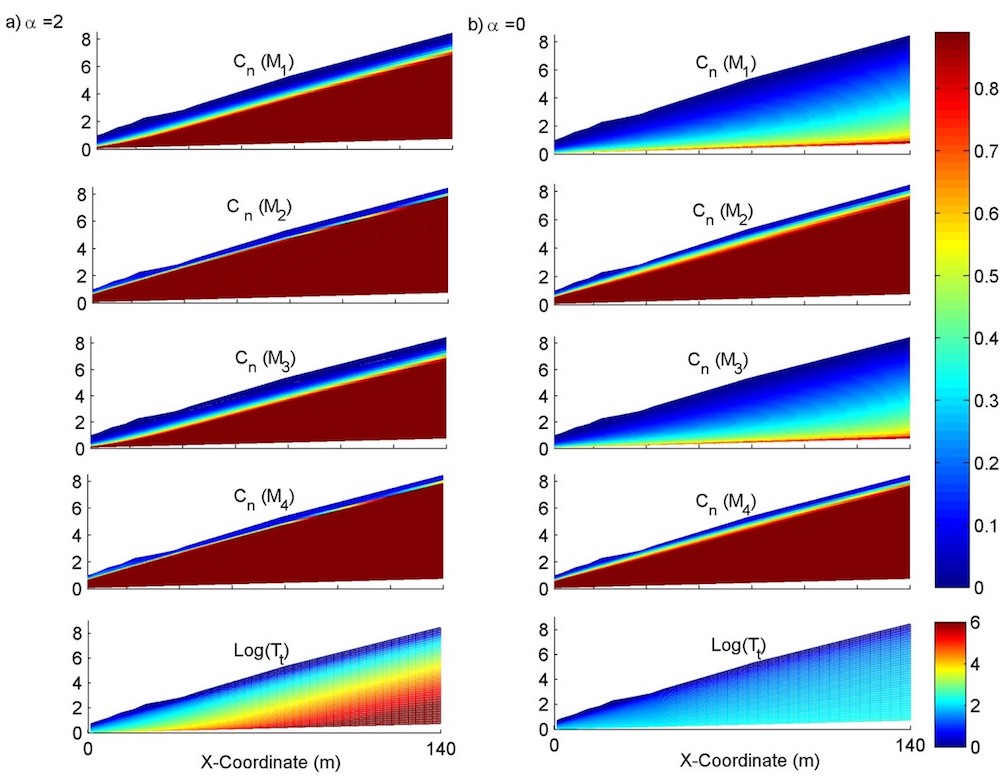
Hillslope Hydrogeochemistry
Paper
Published in Water Resources Research
Ameli, A., K. Beven, M. Erlandsson, I. Creed, J.J. McDonnell and K. Bishop. (2017), Primary weathering rates, water transit times, and concentration-discharge relations: A theoretical analysis for the critical zone, Water Resources Research, 52, doi:101002/2016WR019448.
Paper Summary:
Ali Ameli’s paper on the interaction between subsurface hydrology and mineral geochemistry was just accepted in the Water Resources Research Journal. This work suggests that subsurface conductivity profiles, mineral weathering reaction kinetics and flow rates interact together, and influence stream concentration-discharge relations. In addition, this work demonstrates that an increase in subsurface vertical heterogeneity in saturated hydraulic conductivity can enhance inverse stream concentration-discharge relation for some (but not all) minerals. Furthermore, results suggest that, as mineral chemical weathering reactivity enhances, the concentration in the critical zone and stream becomes less dependent on the groundwater age (or transit time).
Spatial distribution of fluid concentration (Cn) (normalized with respect to the mineral) for four minerals (M1, M2, M3, M4) in response to high flow conditions, and the spatial distribution of particle residence times throughout the hillslope (Tt) in response to high flow conditions (last row). Residence time is the time which elapses between when a particle enters the soil at the land surface and when it reaches a given point within the hillslope. a) Heterogeneous saturated hydraulic conductivity vertical pattern (α=2). b) Homogenous saturated hydraulic conductivity pattern (α=0). The mineral’s decreases between M1, M2 and between M3, M4.
